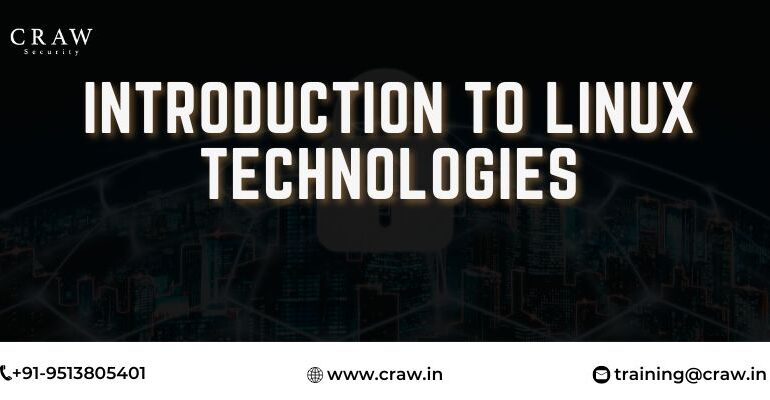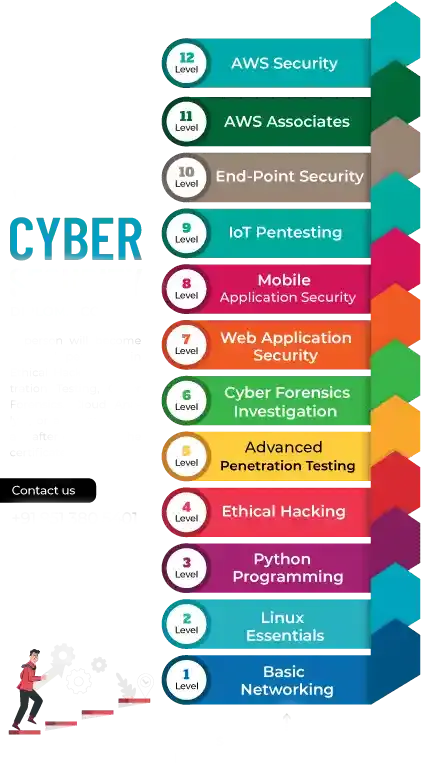Introduction to Linux Technologies | Linux Free Webinar

Introduction to Linux Technologies | Linux Free Webinar
Over the course of time, Linux, an open-source operating system, has grown significantly in popularity and usage. The foundations of Linux technology, its origins, distributions, advantages, kernel, command-line interface (CLI), graphical user interface (GUI), file system, package management, shell scripting, and applications that it supports in different settings will all be discussed in this article.
This article will give you a thorough introduction to Linux technology, whether you are brand-new to Linux or just want to learn more.
What is Linux?
Linus Torvalds created the Linux operating system kernel in 1991. It has UNIX as its foundation and is renowned for its dependability, security, and adaptability. The open-source nature of Linux, which allows anybody to read, alter, and distribute the source code, makes it unique.
The History of Linux
The original iteration of the Linux kernel was created in the early 1990s by a Finnish computer science student named Linus Torvalds. Since that time, Linux has developed thanks to the efforts of a large development ecosystem on a global scale to become a strong and adaptable operating system used on a variety of platforms.
Linux Distributions
Linux distributions, or distros as they are commonly known, are various varieties of Linux that bundle the Linux kernel with a selection of programs and applications. Several well-known Linux distributions are CentOS, Fedora, Ubuntu, and Debian. These distributions offer a variety of functions and software packages to accommodate various user demands and tastes.
| Ubuntu | Based on Debian, Ubuntu is a user-friendly Linux distribution. It has a robust graphical user interface (GUI) and is frequently used for desktop computing. Ubuntu is a well-liked option for newcomers since it places a strong emphasis on usability and accessibility. |
| Fedora | Red Hat supports Fedora, a Linux distribution that is fueled by community input. It places a focus on modern-day technology and is frequently utilized by players and developers. Fedora is appropriate for both workstation and server settings because it strikes an equilibrium between stability and fresh capabilities. |
| Debian | One of the first and most well-known Linux distributions is Debian. It is an increasingly common choice for servers and mission-critical systems because it places a high priority on reliability and security. Debian has a huge library of software packages and a clear preference for free and open-source applications. |
| CentOS | Red Hat Enterprise Linux (RHEL)’s source code served as the foundation for the Linux distribution known as CentOS. It aspires to offer a long-term supported, free, enterprise-class OS. In server settings where dependability and stability are essential, CentOS is extensively utilized. |
Benefits of Linux
Numerous advantages that Linux provides help to fuel its rising appeal across multiple industries. Knowing these advantages will assist in clarifying why Linux is used so frequently in various settings.
| Security | Because of its sophisticated safety characteristics, Linux is well known. Due to the fact that it is open-source, security flaws can be swiftly found and fixed by members of the community. Furthermore, Linux has built-in safety measures, including encryption, firewalls, and file permissions. |
| Stability | Linux has a reputation for being exceptionally stable. The kernel is built to effectively manage many processes, reducing errors and failures in the system. Linux systems can operate continuously for long periods of time without the requirement for a reboot. |
| Customizability | Linux’s great level of customizability is one of its main benefits. Users are free to personalize and adjust their Linux distributions to suit their unique requirements and interests. Users who have possession of the source code can customize and improve their Linux systems to meet their needs. |
| Cost-effectiveness | In comparison to commercial operating systems, Linux is a more affordable option. Since the majority of Linux distributions have no cost, there is no longer a need for high licensing fees. Additionally, Linux functions well on outdated hardware, enabling businesses to increase the service life of their current systems without incurring expensive hardware upgrades. |
Linux Kernel
The Linux kernel is the foundation of every distribution of Linux. The administration of system resources, support for hardware, and interaction between hardware and software elements are all tasks that the kernel is in charge of. It supports the operating system’s efficiency and functionality and acts as its structural backbone.
- Command-Line Interface (CLI)
The robust command-line interface (CLI) provided by Linux enables users to communicate with the operating system using text-based commands. The CLI offers sophisticated control and flexibility, allowing individuals to carry out difficult operations, automate procedures, and effectively manage the system.
- Graphical User Interface (GUI)
Linux distributions also include a user interface called a graphical user interface (GUI) for individuals who want an appealing user interface. With its icons, windows, and menus, the GUI provides an easy-to-use interface that makes it simpler for novices to traverse and communicate with the system. Linux GUIs are available in a variety of flavors, including GNOME, KDE, and Xfce, each of which offers a unique user experience.
- Linux File System
A hierarchy file system is used by Linux to arrange directories and files in a tree-like form. The initial location is the root directory (“/”), from which subdirectories branch out. This file system makes it possible to store, handle, and retrieve data quickly while maintaining its confidentiality and availability.
- Package Management
Package management systems are used by Linux distributions to make it easier to install, update, and remove software packages. Such package administrators offer an organized and effective approach to handling software, dependencies, and system upgrades. Examples include APT (Advanced Package Tool) and YUM (Yellowdog Updater, Modified).
- Linux Shell and Shell Scripting
Users can communicate with the operating system using the Linux shell, which is an interpreter for commands. It offers a command-line interface through which users may run programs, enter commands, and automate operations. Shell scripting enables the automated execution of intricate procedures and the development of unique workflows by allowing users to write scripts that combine several commands.
- Linux in Server Environments
Due to its reliability, safety, and flexibility, Linux has an important role in server settings. Operating systems based on Linux are used on numerous web servers, database servers, and cloud servers. Linux is a great option for delivering crucial applications and services due to its durability and productivity.
- Linux in Embedded Systems
In the case of embedded systems, typically specific computer systems built into different devices and gadgets, Linux is frequently utilized. For executing embedded applications, Linux offers a compact and adaptable platform, making it popular in sectors including automotive, telecommunications, and healthcare.
Linux in IoT (Internet of Things) Devices
Linux is essential for running IoT devices as the Internet of Things (IoT) expands. It is appropriate for a variety of IoT applications, ranging from smart homes and wearables to industrial automation and agriculture, due to its adaptability, minimal demands on resources, and comprehensive driver support.
Linux in Cloud Computing
Several cloud computing platforms and infrastructures are built on Linux. It is a favored option for creating cloud environments due to its scalability, dependability, and affordability. Many cloud services, such as virtual machines, containers, and serverless computing, are powered by Linux-based operating systems, allowing companies to make use of the advantages of cloud computing.
FAQs
About Introduction to Linux Technologies
1: Is Linux difficult to learn for beginners?
Beginners may find it challenging to learn Linux, particularly if unfamiliar with the command line’s interfaces. Still, there are many accessible packages and materials to aid newbies in getting started and progressively gaining skills.
2: Can I install Linux alongside my existing operating system?
Yes, dual-booting is supported by the majority of Linux distributions. Thus, you are able to install Linux with your existing operating system and decide which to boot into at launch. However, it’s crucial to back up your information and to pay close attention to installation guidelines.
3: Are there paid versions of Linux?
Even though Linux is a free and open-source operating system, some businesses sell Linux variants that include more features, support, and services. Red Hat Enterprise Linux (RHEL) and SUSE Linux Enterprise are two examples.
4: Can I run Windows applications on Linux?
Linux comes with a broad choice of software applications already installed. However, compatibility levels like Wine or virtualization programs like VirtualBox or VMware could be needed in order to run Windows programs natively on Linux.
5: Is Linux only for programmers and technical users?
Linux is not just for computer geeks and developers. Even though it has a wide range of developer-friendly features, Linux is usable by people with different backgrounds in technology because of its user-friendly variants with graphical user interfaces.
Conclusion
In summary, Linux technologies have completely changed the operating system industry. With its open-source philosophy, reliability, safety, and flexibility, Linux has become widely used in a variety of industries. A major part of what makes Linux a flexible and potent operating system is its kernel, command-line interface (CLI), graphical user interface (GUI), file system, package management, and shell scripting. In addition to its effect and reach, Linux discovers apps for server settings, embedded systems, IoT devices, and cloud computing. Understanding the fundamentals of Linux technology is crucial in today’s digital world, regardless of your level of experience.
Moreover, there is a world-class institute of Craw Security, which is the Best Linux Training Institute in India, offering genuine Linux Training in Delhi NCR through top-notch training instructors with many years of crucial experience and best practices.















